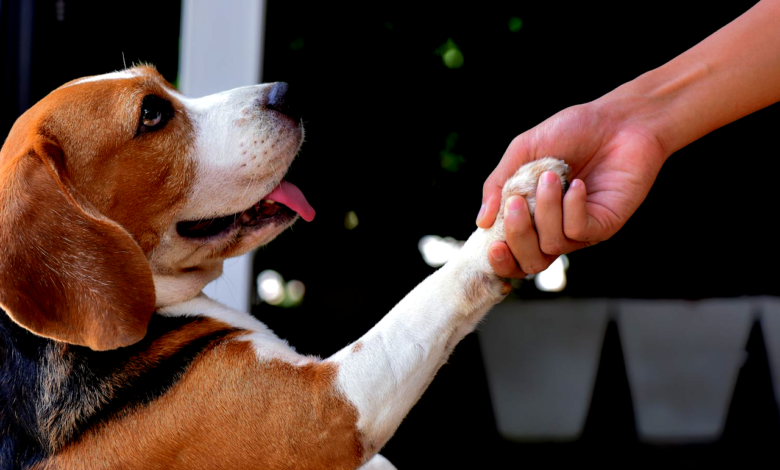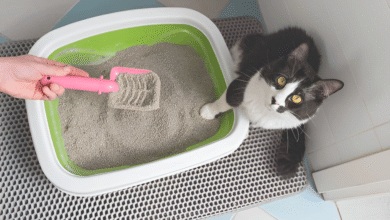
Positive Reinforcement Training Techniques for Dogs
Positive reinforcement training techniques for dogs use rewards to encourage good behavior. Learn humane effective methods to train your dog successfully.
Positive reinforcement training techniques are widely regarded as the most effective and compassionate way to teach dogs new behaviors and strengthen the bond between pet and owner. Unlike traditional punishment-based methods, which rely on fear or intimidation, positive reinforcement focuses on rewarding desired actions with treats, praise, or play, encouraging dogs to repeat those behaviors willingly. This approach not only makes training more enjoyable for your dog but also fosters trust, confidence, and long-term obedience. Whether you’re teaching basic commands or addressing behavioral issues, positive reinforcement creates a stress-free learning environment that benefits both puppies and adult dogs.
The science behind positive reinforcement training techniques is rooted in behavioral psychology, demonstrating that behaviors followed by rewards are more likely to be repeated. By using high-value treats, verbal praise, or favorite toys as incentives, you can effectively shape your dog’s actions while avoiding the negative side effects of harsh corrections. This method is adaptable to all breeds, ages, and temperaments, making it an ideal choice for responsible pet owners who want a happy, well-behaved companion. In this guide, we’ll explore the key principles, benefits, and practical steps to successfully implement positive reinforcement in your dog’s training routine.
Positive Reinforcement Training Techniques for Dogs
Psychological Foundations of Positive Reinforcement
Positive reinforcement training is grounded in operant conditioning principles developed by B.F. Skinner, which prove that behaviors followed by rewards are more likely to be repeated. In dog training, this means immediately reinforcing desired actions (like sitting or staying) with rewards the dog values whether food, praise, or play creates strong behavioral patterns. This scientific approach works because it taps into the dog’s natural learning process, where they associate specific actions with positive outcomes, making them voluntarily repeat those behaviors. Unlike punishment-based methods that trigger stress responses, this reward system builds neural pathways for cooperation rather than fear.
Evidence-Based Benefits for Canine Behavior
Research confirms that dogs trained through positive reinforcement show measurable improvements in behavior and emotional well-being. Studies comparing reward-based versus aversive methods reveal that positively trained dogs exhibit Lower stress hormone (cortisol) levels during training sessions. Fewer signs of anxiety and aggression. Stronger bonds with their handlers. Greater enthusiasm for learning new tasks. This method aligns with dogs’ natural cognition they learn best through immediate consequences of their actions (trial-and-error) rather than through punishment.
Benefits of Positive Reinforcement Training
Creates a Positive Learning Experience
Positive reinforcement training fosters a joyful and cooperative attitude in dogs by associating training sessions with rewards and encouragement. When dogs receive treats, praise, or play for correct behaviors, they become eager participants in the learning process rather than reluctant subjects. This method eliminates the fear and stress that often accompany punishment-based techniques, such as shock collars or physical corrections, which can trigger anxiety or aggression. Instead, dogs develop confidence and enthusiasm, making training more effective and enjoyable for both pet and owner.
Adaptable to All Dogs and Situations
One of the greatest strengths of positive reinforcement is its flexibility it works equally well for puppies, adult dogs, and even rescue animals with behavioral challenges. The approach can be customized based on a dog’s personality, motivation, and learning pace. Whether teaching basic commands like “sit” and “stay” or addressing complex issues like excessive barking or leash pulling, positive reinforcement provides a gentle yet effective framework. Trainers can adjust rewards (food, toys, or affection) to suit individual preferences, ensuring every dog can succeed regardless of age, breed, or background. This versatility makes it an ideal choice for all types of training goals.
Key Techniques for Effective Positive Reinforcement Training
Choosing the Right Rewards
Not all dogs are motivated by the same rewards. While many respond well to food treats, others may prefer playtime, belly rubs, or verbal praise. High-value treats (like small pieces of chicken or cheese) are especially useful for teaching new commands or working in distracting environments. Experiment to find what your dog loves most and use it strategically.
Timing and Consistency
The key to success in positive reinforcement is delivering the reward immediately after the desired behavior. Even a few seconds of delay can confuse the dog. Consistency is equally important every family member should use the same commands and reward system to avoid mixed signals.
Shaping Behaviors Through Incremental Steps
For complex behaviors, break the training into smaller steps. For example, if you’re teaching your dog to roll over, start by rewarding them for lying down, then for turning their head, and gradually for completing the full roll. This technique, called “shaping,” helps dogs understand what is expected without becoming frustrated.
Using a Marker Word or Clicker
A marker (like a clicker or the word “Yes!”) signals the exact moment the dog performs correctly, making it easier for them to associate the behavior with the reward. Clicker training is particularly effective because it provides a clear, consistent sound that stands out from everyday noises.
Phasing Out Treats Gradually
While treats are helpful in the early stages, the goal is to transition to intermittent rewards, so the dog doesn’t become dependent on food. Once a behavior is learned, replace treats with praise or play, occasionally surprising them with a treat to keep the behavior strong.
Common Challenges and Solutions
Lack of Motivation
If your dog seems uninterested in training, reassess the rewards. Try higher-value treats or incorporate more play. Also, keep sessions short (5-10 minutes) to prevent boredom.
Distractions
Start training in a quiet environment and gradually introduce distractions. If your dog struggles, increase the reward value or take a step back in training difficulty.
Unwanted Behaviors
Instead of scolding bad behavior, redirect your dog to an acceptable alternative. For example, if they jump on guests, teach them to sit for attention instead.
Read More: Daily Supplements for Pets What North Dakota Owners Should Know
Conclusion
Positive reinforcement training techniques offer the most compassionate and effective way to build a strong, trusting relationship with your dog while achieving lasting behavioral results. By focusing on rewarding good behavior rather than punishing mistakes, you create a positive learning environment that keeps your dog engaged, confident, and eager to please. Whether you’re teaching basic obedience or correcting unwanted habits, this method ensures training remains a joyful experience for both you and your canine companion.
As you continue using positive reinforcement training techniques, remember that patience and consistency are key. Every dog learns at their own pace, and setbacks are simply opportunities for growth. By maintaining a positive attitude and celebrating small victories, you’ll not only shape better behavior but also deepen the unbreakable bond between you and your furry friend. With time and dedication, you’ll see how powerful kindness and rewards can be in raising a well-mannered, happy dog.
FAQs
What is positive reinforcement in dog training?
Positive reinforcement involves rewarding desired behaviors to encourage repetition, using treats, praise, or play as incentives.
How do I start positive reinforcement training?
Begin with simple commands, use high-value rewards, and mark correct behaviors immediately with a clicker or verbal cue.
Can positive reinforcement work for aggressive dogs?
Yes, but it requires patience and professional guidance to address underlying causes while reinforcing calm behavior.
What if my dog doesn’t respond to treats?
Experiment with other rewards like toys, affection, or play to find what motivates your dog.
How long does it take to see results?
Results vary, but consistent daily training sessions typically show progress within a few weeks.







